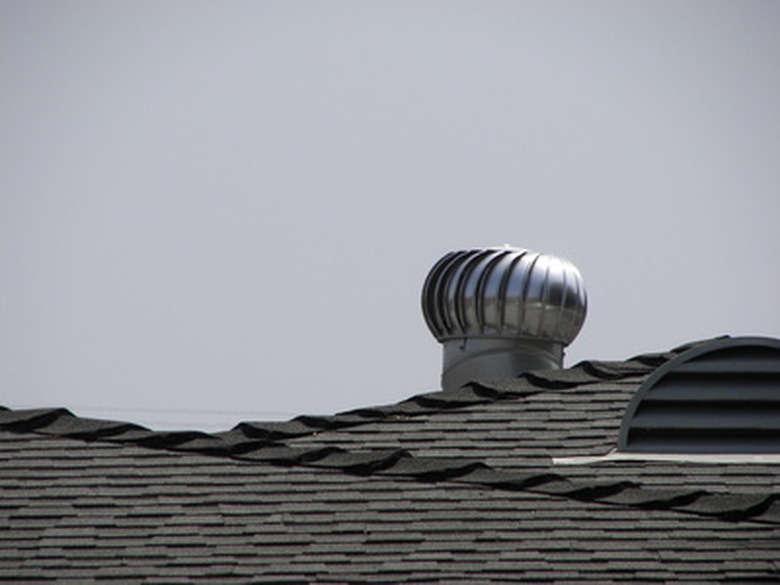How To Lubricate Roof Vents
Things Needed
-
Silicone-based lubricant
-
6-foot stepladder
-
Extension ladder that will reach the roof
Sometimes called whirlybird vents, the turbine vents on the roof of homes pull heated air out of the attic in the hot summer months. They also remove cold air in the winter. This function helps reduce energy bills when the vents are working properly. However, when they begin to squeak, grind or make other noises as they spin, it is time to lubricate them. If the noises continue after lubrication, they may need to be replaced. WD-40 or a similar product can be used as a short-term fix.
Step 1
Place the stepladder under the attic access space. Climb the ladder, remove the access panel, and enter the attic. Find the noisy turbine and apply the lubricant to the moving parts of the turbine. Be sure to lubricate the bearings. These are located in the track where the pipe coming out of the roof meets the spinning part of the vent.
Step 2
Walk back to the attic opening and climb down the ladder, replacing the attic access cover on the way.
Step 3
Place the extension ladder next to the house. At least four rungs of the ladder should extend beyond the edge of the roof. Climb the ladder and step onto the roof. Step onto the first rung that extends above the edge of the roof and step onto the roof while holding onto the ladder with one hand.
Step 4
Walk or crawl to the turbine. Apply the silicone lubricant to the pivot point and any other parts that appear to be contributing to the noise. Carefully climb off of the roof, first stepping up onto the ladder rung that is above the roof edge.
Tip
Wear slip-resistant shoes when climbing on the roof.
Be sure to use a silicone-based lubricant, not a graphite-based product because graphite dries out quickly.
Warning
When climbing onto the roof, have a helper steady the ladder from the ground so it doesn't slip as you are climbing.
When walking in the attic, be sure to walk only on the joists in the attic or on the ceiling joists. Stepping between them could put a hole in your ceiling below.
